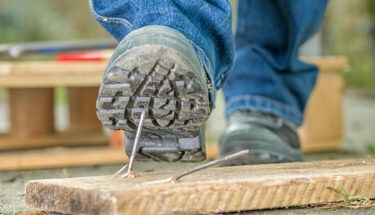It’s about showing your company’s commitment to keeping your people safe, showing how you are going to approach the requirements, demonstrating where and when you intend to go above and beyond simply what’s required of you, and making sure what you’ve produced is a usable, living document.
Management Commitment
One of the first things your plan should include is a signed statement from the highest levels of your company, stating just what your commitment to employee well-being is. This statement should state clearly that the document is not a suggestion, rather that it is a policy to which personnel will be trained and held to. Safe work performance, it should note, is not a choice but a condition of employment. The statement should indicate that accountability among management is a key to a successful program. More importantly, though, you must live this statement. Don’t say anything you’re not prepared to practice in reality and, if you feel something should be in your policy but you’re hesitant to add it knowing that you’ll have to live by it, then you need to ask yourself why.
Policies and Procedures
As stated, your HASP isn’t about regurgitating regulatory requirements. Sure, there is a lot of technical information in the OSHA regulations (or whatever your governing body is where you live or work), but they don’t, in most instances, provide means or methods. That’s up to you. While your HASP doesn’t need to have a detailed plan for each specific circumstance (these can be included in an SOP manual in the manufacturing world or in site-specific HASPs and work plans in construction), there should be some indication of procedure. If you, as a company have decided that only SRLs with full-body harnesses are acceptable for fall-protection, then there is no need to spend 3 pages talking about expansion packs or body belts. Instead, spend that real estate detailing which SRLs are acceptable, where they’re not able to be used, and how to properly adjust your harness.
More Than the Minimum
You don’t have to do just what the regulations require you to do. You have to do at least what the regulations require you to do. For example, just because OSHA allows for fall protection to begin at 10’ on a scaffold, doesn’t mean your company needs to agree. You may feel, as many construction companies do, that 6’ fall protection is necessary across the board – whether on a scaffold, performing steel erection, or any other task which receives its own starting height in the regulations. If that’s the case, the HASP is where you need to make it known. Keep in mind, however, that if you’re going to make it part of your program, it needs to be enforced – and enforced consistently.
Updates
Your HASP is not a document that can be produced, thrown on a shelf, and forgotten about. In fact, a number of policies are required to be reviewed annually. For instance, if you perform lockout/tagout, you are supposed to be periodically inspecting your procedure to ensure its effectiveness and updating it at least annually. Reviews and revisions are a good way to demonstrate that your plan is being constantly updated and approved. Keep in mind, your business can change, technology can change, regulations can change. If any of that happens, you need to reflect it by updating your HASP.
Conclusion
Your HASP needs to be technically correct and should, therefore, be written by somebody with relevant the knowledge, but there is so much more to the document than that. Cookie-cutter HASPs found online are useless if they are not tailored to your specific work practices and serve as a red flag to regulatory bodies, especially when a company hasn’t even bothered to “fill in the blanks.” Don’t treat your corporate HASP as a necessary evil that deserves nothing more than smoke and mirrors. Treat it like the document that lays the foundation for keeping your employees safe. Write it, train to it, review it and update it as necessary. For help with any or all of these steps, don’t hesitate to contact us at Signature Safety.


